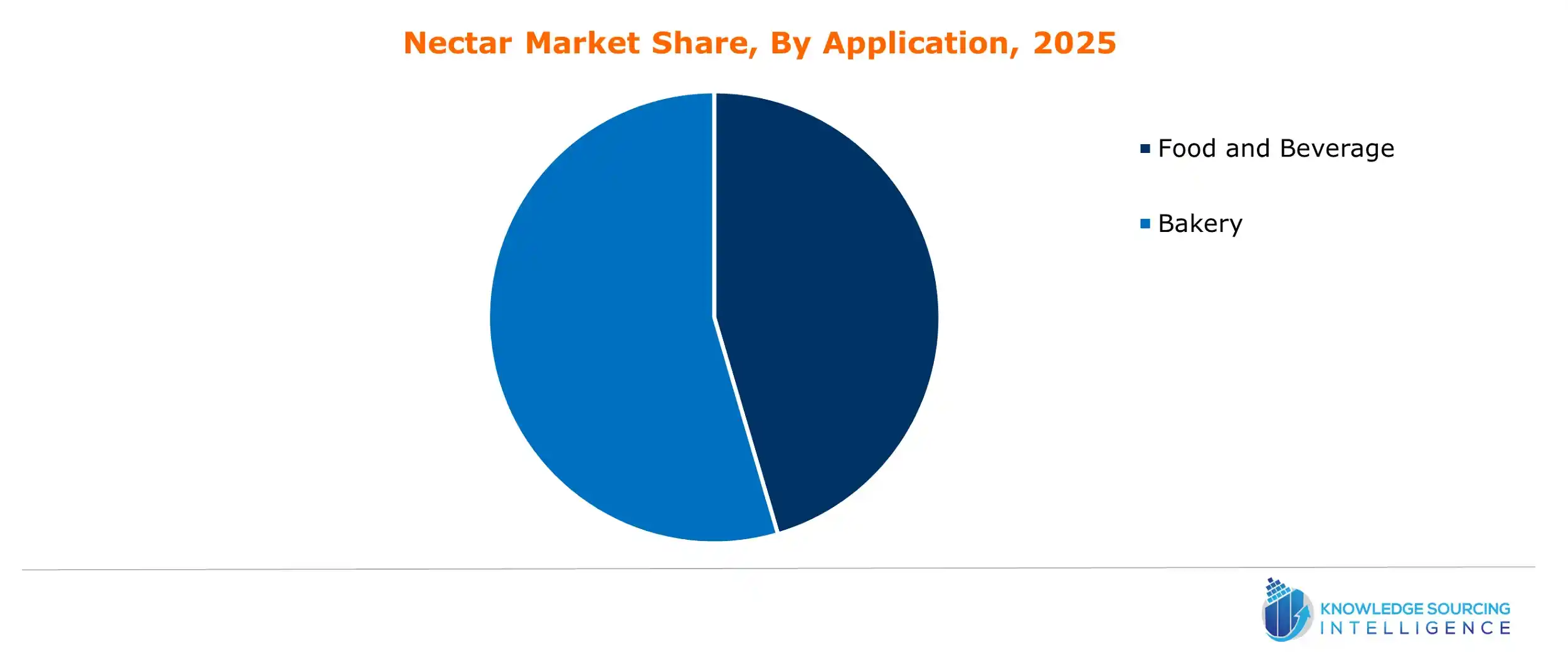Nectar Market expected to reach USD 10.630 billion by 2030
Nectar Market Size & Growth
According to a research study published by Knowledge Sourcing Intelligence (KSI), the nectar market will expand from USD 7.924 billion in 2025 to USD 10.630 billion in 2030 at a CAGR of 6.05% during the forecast period.
Nectar juice, referred to as pulp juice or nectar drink, is a beverage composed of fruit pulps and flesh. Fruit juice nectar is produced from natural fruit pulp or concentrated pulps and incorporates fibrous fruit material and pectins.
A key driving factor for global nectar market growth is people’s awareness of the negative implications of soft drinks on human well-being. Consumers tend to a healthier versions of carbonated beverages, including soft drinks and sodas. Due to this reason, nectar demand is surging upward step by step and having a positive impact on world nectar market growth. Individuals are gaining knowledge about their way of life and eating habits towards healthy living. Furthermore, rising disposable income, standards of living, and accelerating urbanization in developing nations have collateral effects on the global nectar market.
The growing emphasis on sustainability has created a greater consumer preference for products that incorporate environment-friendly practices. These constitute some very powerful audiences demonstrating brand loyalty towards such eco-friendly package-related and sustainable ingredient source messages. The manufacturers are also experimenting with new flavor profiles and combinations instead of relying on regular and conventional nectars and juices that may even contain some superfoods or exotic fruit blends.
The global nectar market includes a wide range of types including orange, guava, papaya, mango, apricot, agave, and others. By application, the market is segmented into food and beverage, and bakery. The market is further segmented based on distribution channels which include online and offline.
➥ View a sample of the report or purchase the complete study at: Nectar Market Report

Nectar Market Report Highlights
- Orange led the market in 2023, capturing the largest and dominant market due to its broad scope. Orange’s wide range probably covers a wide variety of nectar products, appealing to different consumer tastes. This extensive availability and product variety allowed Orange to take a major share of the market.
- The food and beverage segment commands the largest market share of the global nectar industry. This is mainly attributed to the mass consumption of nectars as a single-serving beverage and as a principal component in various food and beverage items. Growing consumer demand for healthier substitutes to carbonated beverages further drives the demand in this category.
- Asia-Pacific region is expected to witness a significant increase in its market share over the forecast period. With North American consumers becoming increasingly health and wellness-focused, increasing consumption volumes for nectars are reported for such products, which are in general thought to be healthier choices than carbonated beverages containing a lot of sugar. To meet the different expectations of different consumers, producers further innovate with novel blends of fruits and flavors, ranging from combinations with functional ingredients and superfoods.
Report Coverage:
| Report Metric | Details |
| Nectar Market Size in 2025 | US$14.157 billion |
| Nectar Market Size in 2030 | US$19.198 billion |
| Growth Rate | CAGR of 6.05% |
| Drivers |
|
| Restraints |
|
| Segmentation |
|
| List of Major Companies in the Nectar Market |
|
Nectar Market Growth Drivers vs. Challenges
Drivers:
- Growing Awareness of Health and Well-being: People from all over the world are changing their preferences and no longer want carbonated soft drinks or other sugary drinks, but rather healthier products. Fruit nectar becomes one of the healthiest beverage options as it is made from natural fruit content and provides essential vitamins. The change toward functional and healthy drinks is the main driver of their demand, the most health-conscious millennial and Gen Z consumer groups being the ones to follow the trend.
- Growth of Distribution Channels for Retail and E-Commerce: The broader distribution of nectar in supermarkets, hypermarkets, specialty beverage shops, and through online grocery platforms is encouraging market penetration to grow. Through e-commerce platforms, the makers are able to connect directly with the health-conscious consumers resulting in the offering of subscription services and home delivery. Brand promotion through digital marketing and influencer campaigns is also playing an important role in capturing the attention of younger demographics.
Challenges:
- Short Shelf Life and Storage Issues: As a fruit-based beverage, nectar must be kept cold, pasteurized, or preserved. Product spoilage and losses can result from improper storage and distribution conditions, especially in developing nations with inadequate cold chain infrastructure. Logistics are more difficult and expensive because of the shorter shelf life when compared to carbonated drinks.
- Seasonal Variability in Fruit Availability: Making nectar largely depends on how much the fruits are available and at what price, which can vary due to weather, diseases and transport problems in the distribution chain. The changes in the seasons cause the harvest to vary and this affects the cost of the product as well as its quality. This instability causes manufacturers to be unsure and may cause consumers to pay higher prices.
Nectar Market Key Developments
- New Product Launch: In February 2025, In Indonesia, Montebelo Brazil introduced four of its signature juices. Two orange juices (with and without pulp) that are 100% natural and Not From Concentrate (NFC) Lime, orange, and maracuja nectar Lime and lemon are blended to make lemonade.
- Collaboration: In January 2025, Grupo Jumex and Full Sail IP Partners partnered with LMCA. Grupo Jumex offers a large range of juices, nectars, and refreshing drinks that are sold in Mexico, the United States, and numerous other nations.
Nectar Market Segmentation
Knowledge Sourcing Intelligence has segmented the global nectar market based on packaging type, application, and distribution channel:
Nectar Market, By Type
- Orange
- Guava
- Papaya
- Mango
- Apricot
- Agave
- Others
Nectar Market, By Application
- Food and Beverage
- Bakery
Nectar Market, By Distribution Channel
- Online
- Offline
Nectar Market, By Region
- North America
- USA
- Canada
- Mexico
- South America
- Brazil
- Argentina
- Others
- Europe
- United Kingdom
- Germany
- France
- Italy
- Spain
- Others
- Middle East and Africa
- Saudi Arabia
- UAE
- Others
- Asia Pacific
- China
- Japan
- India
- South Korea
- Australia
- Others
Nectar Market Key Players
- Döhler
- Kanegrade
- The Tierra Group
- Malt Products Corporation
- ciranda, inc.
- Nectar Pharma
- Nectar Fresh
- Tetra Pak
- Siveele B.V., Breda
- Citrofrut
- Rabenhors
About Knowledge Sourcing Intelligence (KSI)
Knowledge Sourcing Intelligence (KSI) is a market research and consulting firm headquartered in India. Backed by seasoned industry experts, we offer syndicated reports, customized research, and strategic consulting services. Our proprietary data analytics framework, combined with rigorous primary and secondary research, enables us to deliver high-quality insights that support informed decision-making. Our solutions empower businesses to gain a competitive edge in their markets. With deep expertise across ten key sectors, including ICT, Chemicals, Semiconductors, and Healthcare, we effectively address the diverse needs of our global clientele.



